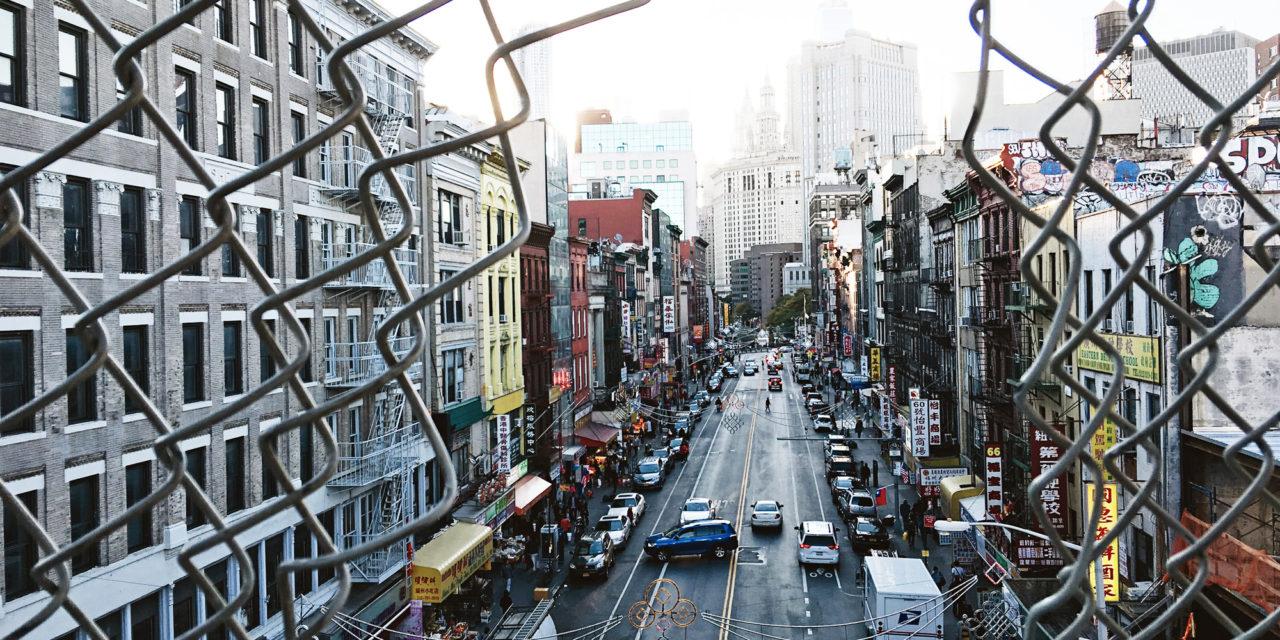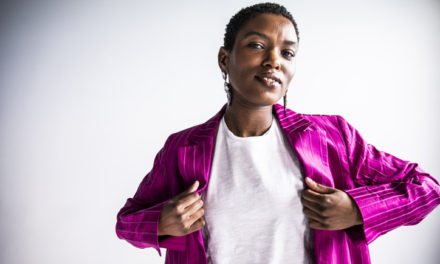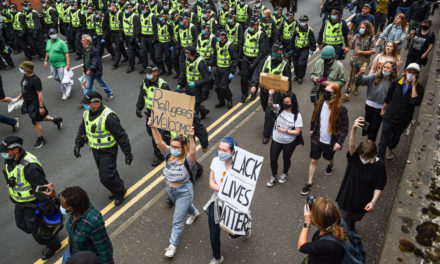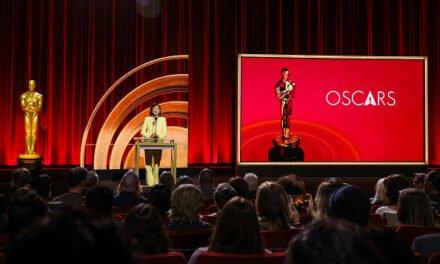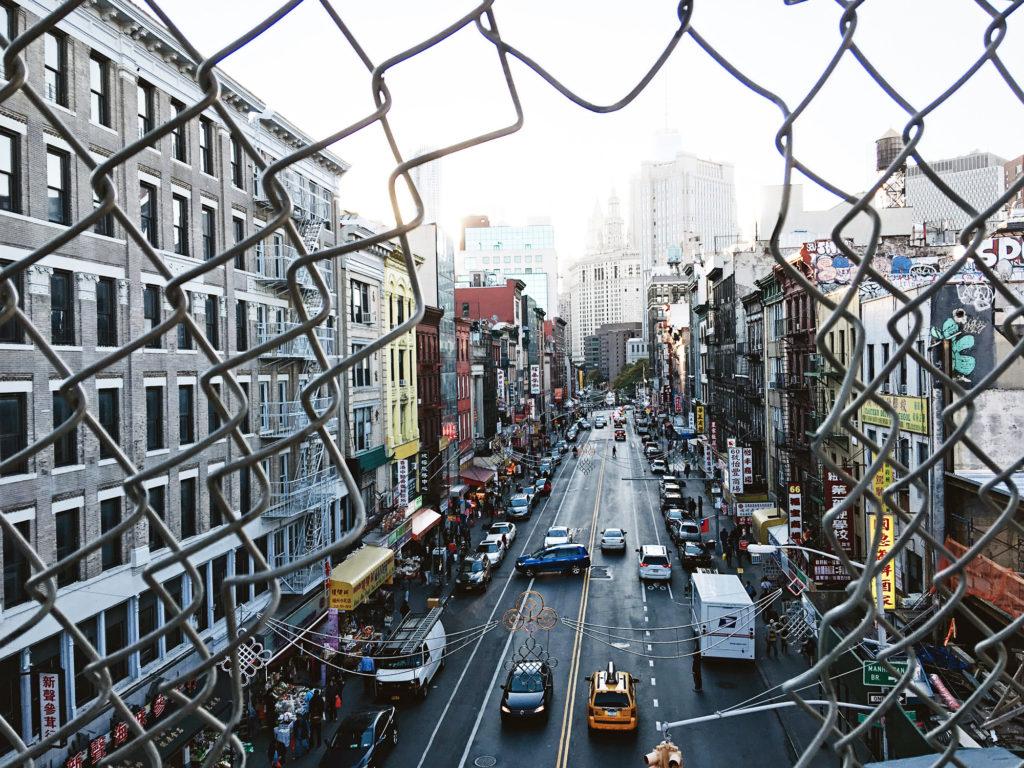
I’ll admit it: I love grabbing the occasional $5.00 latte at a super artsy coffee shop—often located in a newly “revived” part of the urban neighborhood I live in or previously lived in. My friends (and other young urban millennials) and I frequent craft breweries in a once-abandoned industrial space, and many of my peers opt to live in the newest modern “industrial chic” luxury high-rise apartment complexes.
One corner store closes, another small boutique opens. Words on billboards and signs in front of new small businesses advertise the “revival” of a “rough” neighborhood “replenishing” the economy. I pay for my latte, and I turn left toward my apartment.
But what happens if I turn right? I walk a few blocks and reach the street that you hear about on the news—a supposed mark of the start of the “bad” and “dangerous” neighborhood. The neighborhood we are told to “stay away from,” that many of us wouldn’t hesitate to rule out when looking for an apartment, and which has an “F” on crime and safety on apartment rental websites.
This might sound like your city or your neighborhood, as this pattern isn’t unique. For many decades, migration patterns show that those in their 20s and 30s tend to live in cities and are staying in them at an increasing rate. Urbanization and gentrification propelled by millennials could look like a progressive movement, a sustainable response to the “white flight” of older generations—which perpetuated systemic racism, economic turmoil within once booming cities, and ultimately, discrimination against Black and Brown communities.
Revival and replenishment…or racism and rejection? With the rise of this pattern, our implicit biases against those different from us, those who lived here before we came, continue to perpetuate the idea that the “safest” neighborhoods are the whitest. Go a train stop or two over: “That street?” That’s “unsafe,” “dangerous,” “ghetto.”
Now, I don’t think you, or I, or anyone wants or actively chooses to live somewhere “unsafe.” Yet, our perceptions of safety are very deeply rooted in our perceptions of people—people who we don’t see as safe, people who we wouldn’t expect to see ordering a cappuccino down the street from where we live. People who you wouldn’t expect to be running a luxury retail store.
Our perceptions of safety are very deeply rooted in our perceptions of people—people who we don’t see as safe, people who we wouldn’t expect to see ordering a cappuccino down the street from where we live. Share on XRobin DiAngelo, author of the award- winning book White Fragility, describes this type of attitude as Aversive Racism, a “manifestation of racism that well-intentioned people who see themselves as educated and progressive are more likely to exhibit… [like] using racially coded terms such as underprivileged, diverse, sketchy, and ‘good’ neighborhoods.” (See her explain the concept further here).
So how can we change our perceptions of safety and danger? And, why should we? The fact of the matter is, these brewery-goers, luxury apartment tenants, quintessential “yuppies,” are most often well meaning, well-intentioned, and often well-educated: particularly about social injustices. (As someone who lives and is a regular in these types of neighborhoods, I inevitably am one of these people.) But, that doesn’t mean that we are well-versed in seeing how our everyday conversations and actions can continue to perpetuate racially biased criminalization and the systemic racism we hope to combat. We may claim, or strive to be, socially conscious and aware, but what are the less visible implications of our abundant, vibrant, and (seemingly) inclusive urban initiatives?
We may claim, or strive to be, socially conscious and aware, but what are the less visible implications of our abundant, vibrant, and (seemingly) inclusive urban initiatives? Share on XAtlantic Researcher Abdallah Fayyad explains the rise of criminalization from gentrification, best:
“When low-income neighborhoods see an influx of higher-income residents, social dynamics and expectations change. One of those expectations has to do with the perception of safety and public order, and the role of the state in providing it. The theory goes that as demographics shift, activity that was previously considered normal becomes suspicious, and newcomers—many of whom are white—are more inclined to get law enforcement involved. Loitering, people hanging out in the street, and noise violations often get reported, especially in racially diverse neighborhoods.”
By spurring economic growth in only selected areas, we may be contributing to further criminalization and systemic racism. Think about it: what kind of person comes to mind when you think of a “shady person” on the street? It is imperative that we acknowledge how our perspective of safety comes from our exposure to danger; often for people raised in predominantly white suburbs, neighborhoods, and schools (like myself) our primary exposure to crime and danger comes from our what we saw on television screens from behind stucco walls, gated communities, and picket fences. As media sensationalizes inner city crime and gang violence, we internalize these biased stories we have heard from our communities and in turn, mentally elevate the danger of these so called “run-down” neighborhoods.
Often for people raised in predominantly white suburbs, neighborhoods, and schools, our primary exposure to crime and danger comes from our what we saw on television screens from behind stucco walls, gated communities, and picket… Share on XThere is overwhelming evidence that we struggle to see and treat our long-existing neighbors, business owners, and community leaders of color as equals. Psychology and Race Studies Professor Dr. Courtney Bonam conducted a set of studies on perceptions of various urban neighborhoods and found that even when respondents showed no racial animosity or hostility, when given a picture of identical houses, but one with a Black family and one with a white family, white respondents were more likely to describe the house as impoverished, dirty, and crime-ridden when it was shown with the Black family, and safe when shown with a white family. Additionally, white people’s perceptions of socioeconomic class of a neighborhood varied significantly by race—houses in neighborhoods with white people were perceived as more expensive than those with Black people. Furthermore, these perceptions have a lasting, systemic impact—known as the “neighborhood gap”—Black and Hispanic/Latinx families tend to live in less affluent neighborhoods compared to white families with the same income.
In turn, this leads to a trickle-down effect that could look like this: the family in the neighborhood adjacent to you—that hasn’t been gentrified or seen the economic flourishing that your neighborhood has—has fewer resources, less money going into infrastructure, less school funding, and in turn, stifled chances for upward mobility. All this can play out even when these residents make the same amount, or more money than their peers in adjacent “revitalized” neighborhoods. So when we call a place “ghetto” or “shady,” jokingly or not, we are perpetuating the fallacy that black and brown means poor and dirty. In reality, it’s our perception of race that continues to create a divide within a city, when we think we are integrating.
When we call a place “ghetto” or “shady,” jokingly or not, we are perpetuating the fallacy that black and brown means poor and dirty. In reality, it’s our perception of race that continues to create a divide within a city, when we… Share on XSo: what can I do as a white and/or person of privilege, to change our perceptions of safety and danger, of good or bad, or clean and filthy?
One of the best things to do to support and empower the Black or brown-owned business on your block is giving them your business and spreading their word. You may think all the small businesses in your hip area are booming, but data shows otherwise. A study from City University of New York analyzed Yelp reviews of both a predominantly Black and predominantly white neighborhoods that have been gentrified in Brooklyn. Yelp reviews frame the white neighborhood’s traditional Polish restaurants as “authentic” and “cozy,” while the Black neighborhoods, including those perceived as “improving” through gentrification are criticized for lack of dining options and “danger.” Black-owned restaurants in the neighborhoods are described as “dirty,” and “ghetto.” This shows yet again—even in gentrified neighborhoods—our judgements about what we think is acceptable are shaded by our racial biases around safety.
Another thing you can do: start unpacking these conversations! So, when you or someone you know says that city/neighborhood/block is dangerous:
Is it really more dangerous than where you live now? Have you been there before? Or is it just that people look different from you: mostly, Black and Brown residents, business owners, baristas? Do you hear about this neighborhood on the news, only in a negative light? Have you always been told “not to go down there?” What makes a neighborhood “better” now than it was before, and what problematic ideas may be incorporated into this perception.
Is it really more dangerous than where you live now? Have you been there before? Or is it just that people look different from you: mostly, Black and Brown residents, business owners, baristas? Share on XLastly, if we want to truly integrate and live up to spurring economic growth, and community vitality, we need to unlearn our definition of danger, and acknowledge and act upon the fact that aversive racism is stifling us from being fully inclusive. Ask yourself or your friends:
Does the cafe you frequent support businesses and events by and for people of color? Do the new and hip breweries intentionally partner with businesses that have been in existence since before their fruition? Is the lone sushi bar in a less “popular” part of the neighborhood advertising in your high-rise condo and not the older condos across the street? Are you and your friends making excuses not to go to an art fair on the “other side of town” because it’s far away, or because it’s “risky?” And finally, if you are a new entrepreneur: how can you make sure to celebrate and collaborate with people of color in your industry?
To shift the narrative in the cities we live in, I vow to continue asking myself and my peers these questions and more—not just once, but continuously. I encourage you, regardless of where and how you live, to think about how you can bring this conversation to your social circles. The more we engage, the more we can address our aversive tendencies, our attitudes on crime and danger, and start recognizing that no matter what side of town you live on, people want to live a safe, healthy, and happy life.
The more we engage, the more we can address our aversive tendencies, our attitudes on crime and danger, and start recognizing that no matter what side of town you live on, people want to live a safe, healthy, and happy life. Share on X
